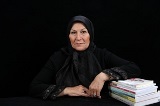Measuring the key and peripheral factors of marital conflicts in the Persian Identification and Assessment of the Central and Peripheral Factors of Marital Conflict in the Persian-Speaking Population (A Mixed-Methods Study) language population of Iran
Keywords:
Marital conflict; Premarital issues; Lack of support and care; Lack of intimacy; Families of originAbstract
Aim: The present study aimed to identify and assess the central and peripheral factors of marital conflict in the Persian-speaking population of Iran. methods: The present study was basic and developmental in terms of purpose. The research design included an exploratory sequential mixed-methods procedure (qualitative-quantitative). To identify the central and peripheral factors, the present study selected and investigated 58 scientific articles in a period of 1991-2019 for a systematic review, 23 conflicting couples for exploratory interviews using the convenience sampling method, and 10 experts for the Delphi method survey using the purposive sampling method, and then developed a comprehensive list of marital conflict in a 344-item checklist, and assessed 450 individual (225 couples) by selecting samples. Thereafter, the results of four stages were combined and central and peripheral factors were classified into peripheral-central factors using coding and factor analysis. Results: After factor analysis, 17 items were removed, and finally, 19 central factors and 235 peripheral factors were identified, and premarital issues (β=0.31), lack of support and care for each other (β=0.22), lack of intimacy (β=0.22), issues related to families of origin (β=0.21), lack of attractiveness (β=0.16), sexual dissatisfaction (β=0.13), frustration (β=0.11), dishonesty (β=0.11), communication patterns, and dysfunctional conflict resolution (β=0.11), economic and job problems (β=0.09), problems with previous emotional relationships (β=0.08), and power structure (β=0.07) played the largest roles in marital conflict, followed by extramarital affairs and infidelity, personality and behavioral problems, children-related factors, lack of conscientiousness, religious factors, and the lack of courage of couples explained the marital conflict. Conclusion: Based on the research results, the set of factors related to the marital conflict were caused by several central factors that needed to be taken into consideration in preventive interventions, diagnosis, and intervention in couples.
Downloads
Downloads
Published
Issue
Section
License

This work is licensed under a Creative Commons Attribution-NonCommercial 4.0 International License.























